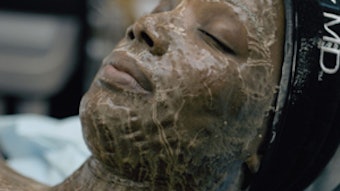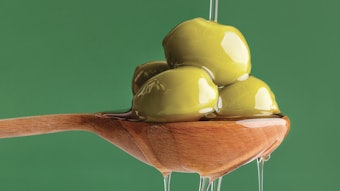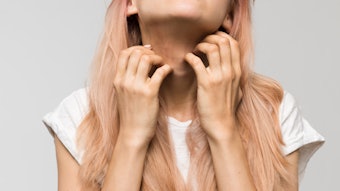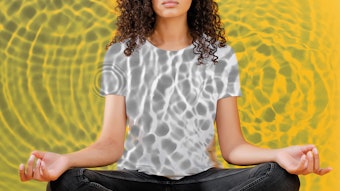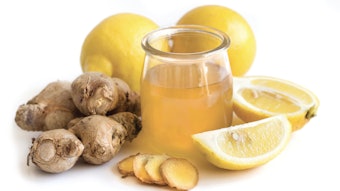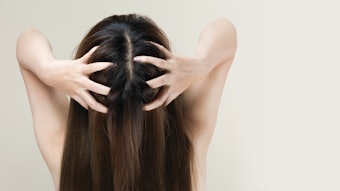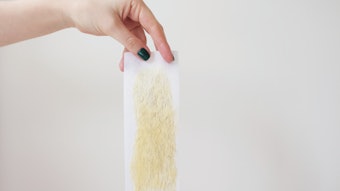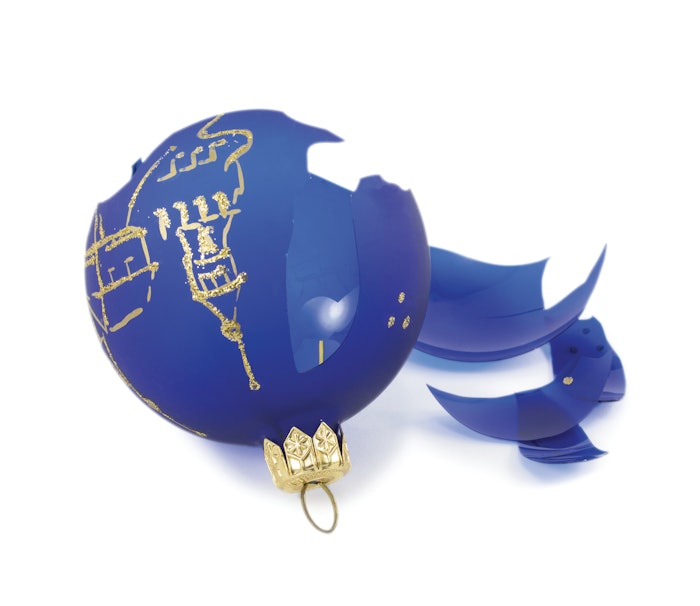
Walk into any treatment room this holiday season and you'll see it instantly—that telltale puffiness around the eyes, the stubborn redness that refuses to calm down, the client who insists their go-to serum suddenly stings. Holiday stress doesn't just mess with our minds; it rewrites our skin's biology in real time.
The numbers paint a clear picture: stress-related skin conditions have surged 40% since 2015. Between 60-80% of clients with chronic skin issues identify stress as their main trigger. During the holidays, these statistics come to life as ‘cortisol face’, sudden product sensitivities and that bone-deep exhaustion no amount of sleep can fix.
This isn't about indulgence anymore—it's about intervention. When clients understand their skin issues stem from biological stress responses, not personal failures or poor product performance, they stop viewing treatments as guilty pleasures and start seeing them as essential wellness care.
When Skin Becomes a Stress Dashboard
Forget mood rings—your client's face is broadcasting their stress levels loud and clear. Holiday stress reveals itself as a perfect storm of symptoms routine "sensitive skin" products and protocols can't touch. You're seeing multiple issues collide: acne flares alongside premature aging, barrier breakdown paired with inflammation and healing that slows to a halt.
The most telling sign? When longtime clients suddenly react to products they've used for years. Their skin hasn't become "difficult"—it's been hijacked by biological stress pathways that operate outside normal skin behavior.
The Hidden Network: How Emotions Rewire Skin
Your client's skin isn't just passively affected by holiday meltdowns—it's actively taking part in molecular crosstalk called the Neuro-Immuno-Cutaneous-Endocrine (NICE) network. This real-time dialogue between brain, nerves, hormones and skin cells creates six distinct stress pathways that transform skin from the inside out.
- The HPA Axis floods skin with cortisol, both from circulation and produced locally by skin cells. This hormone doesn't just cause puffiness—it breaks down collagen, thins the barrier and accelerates aging at the cellular level.
- Sympathetic nervous system activation releases substance P and adrenaline, creating instant redness and restricting blood flow. This is why stressed clients often look flushed but feel cold, and why their skin seems to age overnight during particularly intense periods.
- Neurogenic inflammation occurs when stressed nerves dump histamine directly into the skin, bypassing normal immune controls. This creates the persistent, treatment-resistant redness that seems to have no clear trigger.
- Cellular aging accelerates when stress damages DNA, shortens telomeres and creates "zombie cells" that produce inflammatory signals while resisting death. This is ‘cortisol face’ in action—the rapid loss of firmness and radiance that makes clients look years older in days, or even weeks.
- Microbiome disruption wipes out beneficial bacteria while problematic strains like Cutibacterium acnes thrive. The result: compromised healing, increased sensitivity and that stubborn combination of dryness and breakouts.
- Epigenetic changes flip genetic switches that control everything from barrier strength to pigmentation. Some of these changes persist long after stress subsides, explaining why some clients never bounce back to their pre-stress baseline.
Present this science confidently. When clients understand these are proven biological processes—not mysterious skin problems that just add to their stress—they invest in solutions instead of bouncing between products hoping for magic.
Spotting Stressed Skin in Your Treatment Room
Conventional skin analysis falls short when stress is the driver. Instead of categorizing by type, look for these stress signatures:
- Facial puffiness that doesn't respond to lymphatic drainage
- Inflammation that migrates around the face
- Texture changes, surface lines and deepening wrinkles that develop too quickly to be normal aging
- Poor wound healing after extractions or peels
- The client who bounces between products, convinced nothing works
Ask strategic questions:
- "When did these changes start?"
- "Do flares coincide with busy or stressful periods?"
Immediate reactions point to nervous system involvement; delayed, persistent issues suggest hormonal and cellular stress.
Beyond Pampering: Ingredients That Interrupt the Cycle
Stressed skin demands real solutions—not another round of pampering. Instead of just delivering relaxation, focus on ingredients that actively target stress pathways at the source, helping skin recover, adapt and repair damage where it starts.
Cortisol blockers like cortinib from Helichrysum italicum can reduce cortisol levels by 76% within 30 minutes. Neurophroline from Tephrosia purpurea seeds targets cortisol produced by skin cells themselves, helping break the local stress cycle.
Cellular repair antioxidants revive the energy systems that stress depletes. Ergothioneine shields mitochondria, the cell's power plants. EUK-134 mimics the superoxide dismutase enzyme that cortisol destroys. RejuveNAD from sunflower sprouts fires up cellular energy production through NAD+—a coenzyme essential for powering cell repair and metabolism—and SIRT-1—a nuclear protein that promotes wound healing and healthy cell replication.
Anti-aging performers target stress-induced cellular damage. Renovage extends cell lifespan by over 30%, preventing the premature cellular retirement that creates aged-looking skin. Celyscence defuses zombie cells to inhibit the spread of inflammatory signals to nearby cells and throughout the body.
Immune modulators like beta-glucans don't just suppress inflammation—they teach immune cells better behavior. This matters for stressed skin, where multiple pathways create unpredictable reactions.
Microbiome restorers, including prebiotics like inulin and fructo-oligosaccharides, feed beneficial bacteria, while postbiotics like lactobacillus ferment deliver ready-made metabolic benefits for barrier repair.
Barrier rebuilders remain essential: ceramides NP, AP and EOP; cholesterol or phytosterols; squalane and fatty and omega acids plug the leaky barrier stress creates. Niacinamide stimulates natural ceramide production while calming nerve-induced inflammation.
Don't overlook aloe vera. Turns out there's a bunch of reasons this desert plant has been used across civilizations for over 4,000 years. New research shows this multitasking ingredient feeds good bacteria, calms inflamed nerves, kills problematic microbes without harming beneficial flora and delivers instant comfort that breaks the stress-skin spiral in minutes.
Practical Applications for Real Results
Keep protocols simple. Stressed clients can't handle complex routines—stick to four products maximum: gentle cleanser, multi-targeted serum, barrier-repair moisturizer and a mineral sunscreen. Layer in sensory appeal through luxurious textures and mild scents for emotional comfort.
Coach mindful application with coordinated breathing. This activates the vagus nerve and triggers oxytocin release, flipping the client's biology from stress mode to repair mode.
Extended massage techniques during treatments serve the same purpose. Those extra minutes of gentle pressure along vagus nerve points deliver measurable physical benefits, not just temporary relaxation.
Reframe the Conversation
Stop positioning stress treatments as luxury add-ons. When you explain your client's symptoms stem from real biological changes—not bad luck or poor choices—you reduce shame and build trust. Frame your services as essential wellness, not optional pampering. When money is tight, clients skip treatments they desperately need because they feel guilty spending on what seems like a luxury instead of taking care of themselves.
Stress is Here to Stay
Our always-on digital culture and uncertain economy ensure that holiday-level stress is becoming a year-round reality for many clients. With these insights, you're positioned to offer something most practitioners don't: targeted solutions based on current science.
The tools are here. The science is solid. The opportunity to improve lives—one stressed face at a time—is in your treatment room.
SIDEBAR | Activating the Parasympathetic Response
Coordinated Breathing Technique
During product application:
- Instruct client to inhale slowly through their nose for 4 counts while you apply product.
- Have them hold for 2 counts during gentle patting or pressing motions.
- Exhale through their nose for 6 counts during massage or smoothing movements.
- Repeat this 4-2-6 pattern throughout application.
The science: This extended exhale in and out of the nose activates the vagus nerve, shifting from the sympathetic (stress) to parasympathetic (repair) nervous system.
Vagus Nerve Massage Points
Apply gentle, sustained pressure (30-60 seconds each):
- Behind the earlobes: Use fingertips in small circles
- Base of skull: Two fingers on either side of spine, just below hairline
- Jaw hinge: Where jaw meets ear, release tension with upward circles
- Temples: Slow, deliberate circles moving toward hairline
- Between eyebrows: Gentle upward strokes toward center of forehead
During treatment: Incorporate these points into your standard facial massage, extending contact time at each location. The sustained pressure stimulates vagal tone better than quick, light touches.
Client instruction: Teach these techniques for home use during their skin care routine to maintain parasympathetic activation between visits.
EUK-134 | Lucas Meyer Cosmetics Canada Inc. (a subsidiary of Clariant) holds the trademark for EUK-134.
RejuveNAD | Mibelle Biochemistry (Mibelle AG), Switzerland, is the developer and trademark owner of RejuveNAD for cosmetic purposes, including “RejuveNAD technology” for skin longevity.
Renovage | Sederma SAS (France), a renowned cosmetic ingredient supplier, holds the trademark for Renovage, which is the tradename for teprenone as a cosmetic active.
Celyscence | Clariant AG, through its Lucas Meyer Cosmetics business, owns the Celyscence trademark for cosmetic actives.
